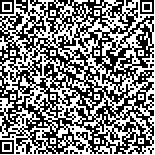下载中心
优秀审稿专家
优秀论文
相关链接
摘要

相对辐射定标的目的是降低或消除由于探测元件之间响应差异引起的图像高频竖向条纹或条带噪声,是遥感数据定量化应用的前提与基础。针对可展开式太阳漫反射星上定标装置,本文提出利用漫反射板收拢过程一次成像的星上相对辐射定标方法。通过卫星机械结构驱动漫反射板收拢调整传感器入瞳处太阳入射能量,获取覆盖传感器全部灰度动态范围的星上定标图像,采用直方图匹配算法解算相对辐射定标系数。为了验证本文提出的方法,利用在轨运行的吉林一号光谱星多光谱仪进行星上相对辐射定标实验,测试定标系数对原始图像的校正效果并定量分析相对辐射定标精度,实验结果表明定标系数能够有效消除全色与多光谱谱段地物原始图像的竖向高频条纹与条带噪声,定量分析的结果表明本文提出的方法在传感器灰度响应的全动态范围均能达到较好的校正效果,谱段相对辐射定标精度优于2%,为卫星在轨运行期间进行定量化遥感应用提供可靠保障。
关键词:
可展开式太阳漫反射板 星上相对辐射定标 直方图匹配 多光谱仪 吉林一号Optical satellite is an important means to obtain remote sensing data by earth observation, and radiation calibration is an important guarantee for quantitative remote sensing. As the satellite sensor is subject to mechanical vibration and acceleration shock during transportation and launch, also taking into account of the aging of optoelectronic devices during long-term on-orbit operation, the radiation performance of the sensor is inevitably affected. As such, the on-orbit radiation calibration is needed to correct the sensor radiation performance. On-orbit calibration is a very important on-orbit calibration method that uses on-satellite calibration devices to measure the radiometric calibration data after the satellite launch. The on-satellite calibrators include calibration lamps, Solar Diffusers (SD) and lunar calibrators, etc. The relative radiometric calibration is used to reduce or eliminate the image high frequency vertical fringe and stripe noise, which are caused by the response difference between detection elements. This process is the premise and foundation of the quantitative application of remote sensing image. In the background of the national major project of global cartography, in order to explore the application potential of relative radiometric calibration for the deployable solar diffuse reflector similar to the Jilin-1 GP satellite, a relative radiometric calibration method based on the solar diffuser is proposed in this paper, which is in order to solve the shortcomings of conventional relative radiometric calibration methods. The method overcomes the dependence of relative radiometric calibration on the accumulation and the uniform consistency of features in the data by imaging through the closing process of the solar diffuse reflector. The solar diffuser is driven by the satellite mechanical structure to close up and adjusts the solar incident energy at the entrance pupil of sensor, by this way acquiring the onboard calibration image. The calibration image covers the whole gray dynamic range of the sensor. Then, the relative radiation calibration coefficients are solved by histogram matching algorithm. In order to verify the method proposed in this paper, the calibration experiment is carried out with the sensor of multispectral spectrometer on JL-1 GP satellite. The correction effect of calibration coefficients on original images are tested and the accuracy of relative radiation calibration is quantitatively analyzed by using non-uniformity. The experimental results show that the calibration coefficients could effectively eliminate the vertical high-frequency fringe and strip noise of the panchromatic and multispectral original image of the ground object. The results of quantitative analysis show that the method proposed in this paper could achieve a good correction effect in the whole dynamic range of sensor’s grayscale, and the relative radiometric calibration accuracy of each band is better than 2%, which fulfills the demand for high-quality remote sensing image applications. On-orbit experiments fully demonstrate that the radiometric calibration method proposed in this paper can complete the calibration task using one solar diffuse reflector closing action, and the proposed method could effectively overcome the dependence of relative radiometric calibration on data accumulation and the uniform consistency of features in the data, which provides a reliable guarantee for quantitative remote sensing applications during the satellite’s on-orbit operation.

